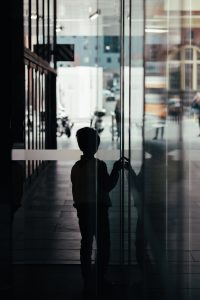Navigating Children’s Aid Services

- Addictions
- Children
- Diversity
- Equity
- Families
- Gender & Gender Identification
- Immigrants
- Incarceration
- Indigenous
- Individuals
- Intersectionality
- 2SLGBTQI+
- Mental Health
- Family
When it comes to Navigating Children’s Aid type services, it is a very complex journey to navigate. There are many moving parts around this including: trauma, violence, discrimination, harassment, stigma, culture, detriments of health, addiction, poverty, community environment, inadequate housing, unemployment, mental health, education, poor self-esteem, anxiety, pressure from peers or family, self-image, bullying, isolation, food shortage, learning challenges (ADHD, ADD), physical challenges, physical disabilities, cyber-bullying, and many others we haven’t listed. There is also the threat of
The Mental Health Commission of Canada has a new DRAFT CONCEPTUAL MODEL: IDEALSS: Toward an Integrated and Comprehensive Equity Framework:
IDEALSS: Intersectionality, Decolonizing, Equitable, Anti-Racism, Lived Experience, Sex & Gender Based Analysis & Social Detriments of Health.
According to OCAS (Ontario Children’s Aid Society) : Children’s Aid Societies help to protect infants, children and youth who are experiencing abuse or are at risk of experiencing abuse, physically, sexually, emotionally or through neglect or abandonment. They also provide help to families who want some extra support and assistance. Great emphasis is placed on ensuring that children can stay with their families and be safe and thrive. Children’s Aid must sometimes remove children from unsafe conditions and take them into its care – although the vast majority of Children’s Aid work is about protecting children and supporting their families to stay together.(1)
We need to be aware that families (each very different) at times face similar challenges and yet sometimes although a challenge can be similar it can be very different.
We’ve looked at a few of
We need to be aware of Families often face issues such as poverty, addiction, unemployment, mental health challenges and inadequate housing, all of which can create added stressors and complications that can affect their ability to care for their children. For example, a child may be suffering from neglect because of their family’s financial and housing situation, or there may be need for Children’s Aid assistance because of a parent’s mental health issues.

Children’s Aid Societies also conduct assessments, provide crisis intervention and ongoing services. Many provide preventative services to vulnerable families through early intervention linking them with counselling services and parenting programs offered in partnership with other community agencies.
When there is need to remove a child from their family due to safety concerns, Children’s Aid Societies will always look for family and kin before placing children in alternative care arrangements such as foster care or group care. When there is no possibility of a child returning to their family or home, other forms of substitute care including adoption and family based custody arrangements are considered.
Children’s Aid Societies are run on a community governance model which means that their Boards of Directors are made up of volunteers from the community. This model of governance puts the onus on the Board for the functioning and financial well-being of their agency.
Facts about Children’s Aid Societies:
- There are 50 Children’s Aid Societies that provide services for Ontario’s children, youth and families.
- Some Children’s Aid Societies are referred to as Child and Family Services, such as Dufferin Child and Family Services.
- In addition to child protection, some agencies provide additional services to their community including children’s mental health services and developmental services, as well as parenting and youth programs.
- Each Children’s Aid Society has their own Board of Directors.
Legal mandate:
In Ontario, Children’s Aid Societies have the exclusive legal responsibility to provide child protection services 365 days a year, 24 hours a day. The activities and purpose of a Children’s Aid Society are set out in the Child, Youth and Family Services Act.
This legislation requires Children’s Aid to:
- Investigate allegations or evidence that children who are under the age of 18 years are in need of protection
- Protect children who are under the age of 18 years
- Provide guidance, counselling and other services to families for protecting children or for the prevention of circumstances requiring the protection of children
- Provide care for children assigned to its care
- Supervise children assigned to its supervision
- Place children for adoption
The legislation governing Children’s Aid Societies also includes providing protection for children who have been harmed or are at risk of harm.
For the complete mandated functions of a Children’s Aid Society, see Child, Youth and Family Services Act
Child, Youth and Family Services Act, 2017, S.O. 2017, c. 14, Sched. 1 – Ontario
OCAS (Ontario Children’s Aid Society) Frequently Asked Questions
At Families Canada, we deliver the education, training and tools that empower our network of organizations to reach families from all backgrounds – building stronger families and stronger communities.(2)
Reference:
- About children’s aid societies – Ontario Association of Children’s Aid Societies. (n.d.). https://www.oacas.org/childrens-aid-child-protection/about-childrens-aid-societies/
- Family Resource Planning Canada. (2023, April 5). Welcome to families Canada. https://familiescanada.ca/

